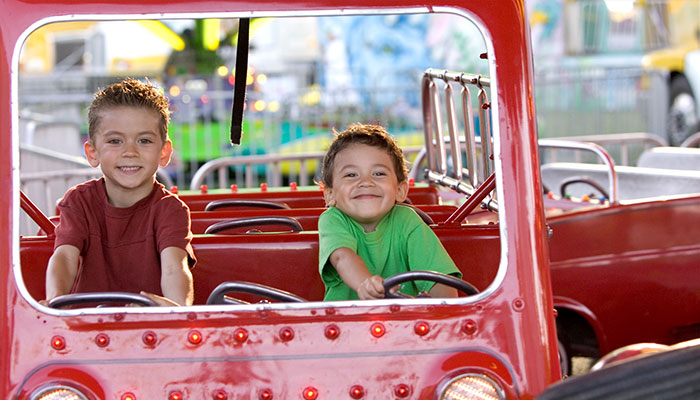While we believe that the books and resources recommended may be of value to you, keep in mind that these are suggestions only and you must do your own due diligence to determine whether the materials are appropriate and suitable for your use. PNC has no sponsorship or endorsement agreement with the authors or publishers of the materials listed.

TRANSPORTATION
Vehicles and Movement
Children will explore movement by moving like airplanes and boats.

Lesson Objective
Children will explore movement by moving like different vehicles used for transportation, such as airplanes and boats.
Art
What You'll Need
- Large space – enough for children to move safely without touching each other
- Music – any movement music (see Lesson Tips for suggestions)
- Audio device – for playing music
- Rubber spots – 1 per child (see Lesson Tips)
- Drum
- Tambourine
- Chart paper
- Marker
What To Do
Note: Before beginning the lesson, place a rubber spot on the floor for each child, making sure they have plenty of space for movement (see Lesson Tips).
- Ask the children to tell you some of the vehicles they have traveled in, and record them on the chart paper.
- Compare the movements of the different vehicles and how they get people from place to place.
- Tell the children they will be pretending to move like some of the different vehicles on the list.
- Discuss the important rules of dance lessons (see Lesson Tips), and have the children stand up and perform the steps of the warm-up (see Lesson Tips).
- Have the children stand on their “home” spots.
- Demonstrate the airplane position by lying on your stomach with arms and legs outstretched, and the “take-off” position by lifting your arms and legs off the ground; have the children follow along.
- Tell the children that the drum is the signal for “take-off” position and the tambourine is the signal for them to stand up and move around the room on tiptoe with their arms outstretched, alternating left and right diagonals to mimic the wings of a plane.
- Cue the music (see Lesson Tips), and repeat the patterns of “take-off” and moving around the room. When the music stops, children will return to their home spots.
- Change the music for moving like boats (see Lesson Tips).
- For moving like boats, pair up the children sitting with their feet together and holding hands. They will row the boat by rocking back and forth to the beat of the music.
- Discuss how moving like an airplane is different from moving like a boat.
- Wrap up the session with some cool-down movements. These can be any type of slow, calming movements.
Resources
Home School Resources
Home educators: use these printable lesson PDFs to teach this lesson to your home schoolers. They're available in English and Spanish.
Content Provided By
Common Core State Standards Initiative – These lessons are aligned with the Common Core State Standards ("CCSS"). The CCSS provide a consistent, clear understanding of the concepts and skills children are expected to learn and guide teachers to provide their students with opportunities to gain these important skills and foundational knowledge [1]. Visit the CCSS


